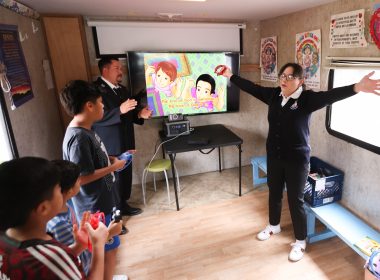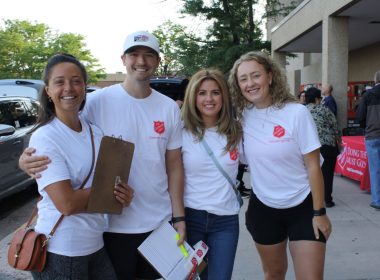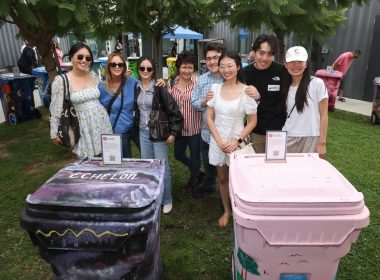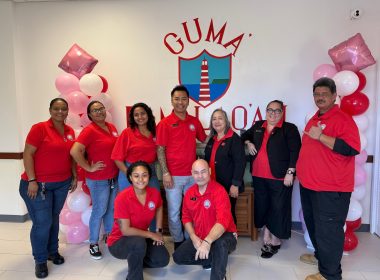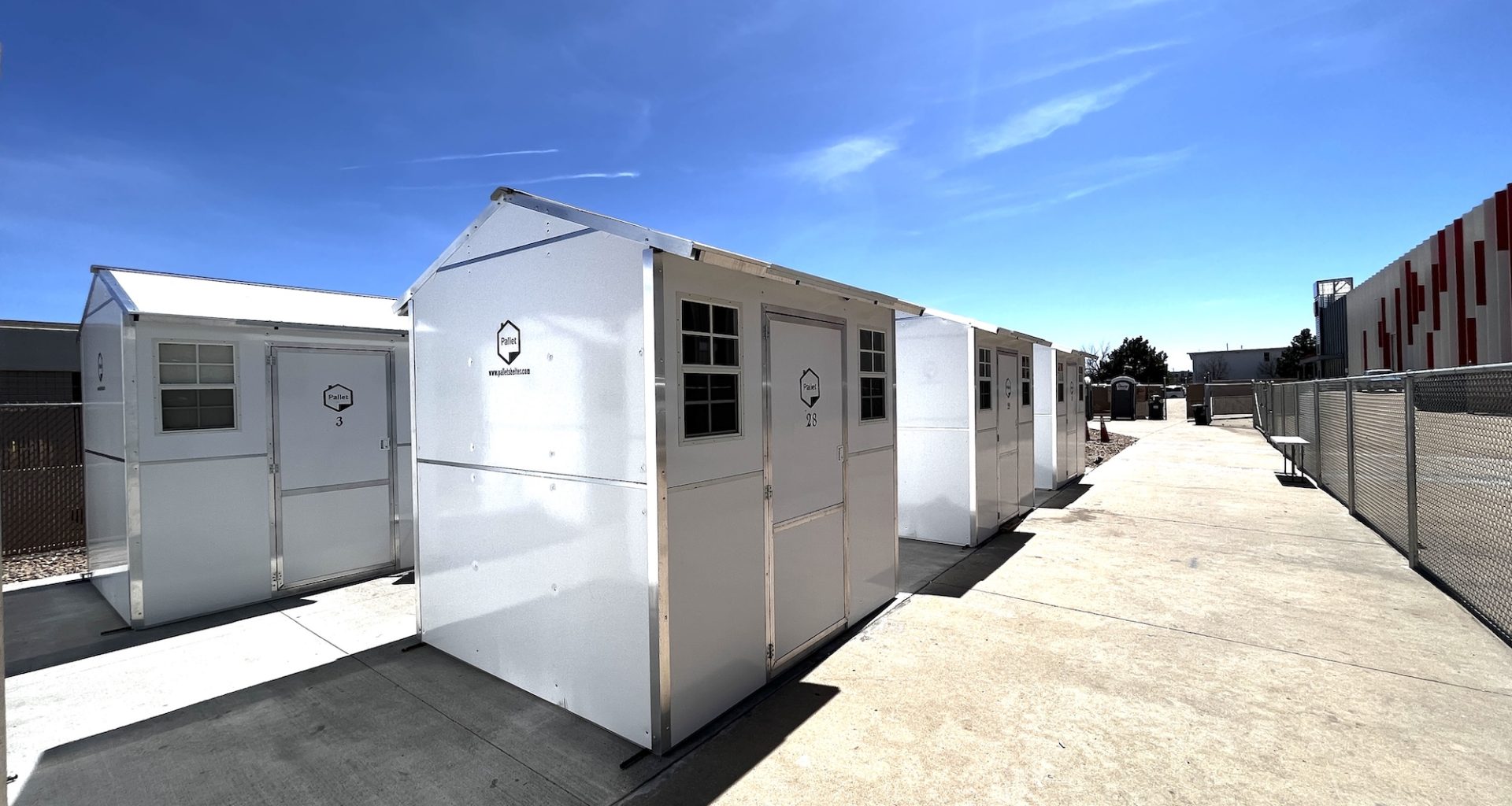Today, we’re covering one of America’s most pressing challenges: homelessness. But this isn’t an episode drowning you in statistics. Instead, we’re going to explore real solutions happening right now across the western United States—ways The Salvation Army is helping to truly change lives, one person at a time.
Of course, the numbers are sobering. According to the Department of Housing and Urban Development, homelessness increased by 18 percent between 2023 and 2024. That’s approximately 770,000 people experiencing homelessness in our country. But behind every statistic is a person’s story, and that’s what we’re focusing on today.
Christopher Hogan, The Salvation Army’s Territorial Social Services Director for the Western Territory, puts it perfectly: addressing homelessness requires “programs of excellence” that combine spiritual care, best practices, clear purpose, strong operations and meaningful outcomes.
He wrote a piece on how The Salvation Army is ensuring excellence in our recent issue of Caring Magazine, themed “Hope in Action,” which you can find at caringmagazine.org/hope.
So what does it look like in practice? Let me take you on a journey from Alaska to Arizona, showcasing nine different approaches that are working.
Alaska: When Hope Comes with a Job
Our first stop is Palmer, Alaska, where we meet John Thomas. Picture this: you’re homeless, living in your car in one of America’s most challenging climates, and you apply for a bell-ringing job during the holidays. That’s exactly what happened to John when he approached The Salvation Army Mat-Su Valley Corps.
But Ministry Leader Envoy Troy Cook saw something more than just another job applicant. He saw someone who needed comprehensive support. Cook connected John and his wife with the Family Services Coordinator, who arranged hotel accommodations, food pantry access, and support services.
Here’s what John said about the experience: “For me, it was the emotional support, not just the job. It was both.”
During their four-week hotel stay, John’s background check cleared and he became a paid bellringer. Today, the couple is working toward permanent housing and dreaming of building a cabin. John’s advice to others facing similar challenges? “Don’t lose hope. There are still people out there who are willing to help.”
John’s story illustrates something key about effective homelessness programs—they address the whole person, not just immediate needs.
Oregon: Safety, Security and Sleep
From Alaska, let’s travel to Portland, Oregon, where The Salvation Army manages something unique: the Sunderland Safe Park. Opened in July 2023, this gated facility accommodates 55 RVs housing up to 110 adults and their pets.
Executive Director Justin Moshkowski describes a transformation that goes beyond just having a place to park: “It can take a month, maybe two, for people to settle in and start to reset,” he said. “They have to adapt from a survival mindset… to realizing that food is always accessible and their stuff is safe.”
Think about that for a moment. When you’re experiencing homelessness, you’re not just dealing with lack of shelter—you’re in constant survival mode. You can’t plan for tomorrow when you’re not sure you’ll make it through tonight safely.
As Justin explains: “When you’re not staying up to keep your stuff safe…you can sleep all night.” That security restores dignity in ways that are hard to quantify but impossible to ignore.
California: Building Bridges to Home
In Northern California, Hope Vista represents something special – it’s an eight-house transitional living community in Olivehurst that serves as the critical bridge between homelessness and permanent housing for families in Yuba and Sutter counties.
Major Julius Murphy, who oversees the program, reports an incredible 95 percent success rate for securing permanent housing, with most families staying just 45 days or less. But here’s what really gets to me about this program – it’s the kids.
Major Julius shares: “With a lot of the families, the kids will walk in and say, ‘I get my own room.’ They never had that before.”
Imagine being a child and never having your own space. Hope Vista provides that peaceful, home-like environment that prepares families for their permanent residences. It’s not just about the transition—it’s about showing families what home can look like.
In Silicon Valley, despite all the wealth and innovation, Santa Clara County houses the nation’s fourth-largest homeless population. Single older women are particularly vulnerable.
Major Daniel Freeman explains the challenge: “Without a police encounter, addiction or mental health issues, or children, there are only about a dozen beds available to more than 500 single women on a nightly basis.”
The solution? The Salvation Army’s Emmanuel House is expanding through donor funding to create a separate, secure 50-bed wing for women, making it the largest shelter for unhoused single women in the region.
Hawaii: Rest in America’s Wettest City
Let’s hop over to Hawaii, specifically Hilo—America’s wettest city with 130 inches of annual rainfall. Try being homeless in that environment. The Salvation Army created the Hilo Overnight Safe Space, a low-barrier, pet-friendly shelter under a tent that operates from 7 p.m. to 7 a.m.
Corps Officer Captain Felicia LeMar explains the purpose: “It’s really for them to come in and sleep and not have to worry about getting abused, getting their belongings stolen and just getting a good night’s rest,” she said.
The impact was immediate. After the first night, one guest stretched, yawned and declared: “That was the best sleep I had in weeks. And I’ll be back tonight.”
Sometimes the most profound solutions are the simplest ones—a safe place to sleep.
Intermountain: The First Call in Crisis
Moving to the Intermountain region, let’s talk about The Connection Center, which serves as a vital lifeline across Colorado, Montana, Utah, and Wyoming. With just six case managers, they handle nearly 2,800 calls monthly.
Program Manager Logan Ray describes their role: “We are the first call most people make in crisis. We encounter people who are suicidal. We have people in active domestic violence who call us…We work with documented and undocumented families.”
What makes this program special is that they don’t just add people to waitlists. They provide immediate solutions – connecting people with food banks, clothing resources, shower facilities, diapers, formula, and transportation to in-person services when needed.
Washington: Tiny Homes, Big Impact
In Longview, Washington, the HOPE Village represents innovation in action. This 50-unit tiny home community has helped about 100 formerly “unhouseable” individuals achieve permanent housing since opening in December 2022.
Major Phil Smith notes: “The premise of the model was to help house these unhouseable people, but really what’s proven to be the biggest impact, I think, is stabilization of that population.”
The program has evolved to better support recovery, and through partnerships with 19 service organizations, an estimated 75 percent of residents now receive substance use counseling, mental health support, or both.
Site Manager Hollie Hillman captures the essence: “We’re just seeing people really getting their hope back…Just with our staff telling them that every day: ‘You’re worth it. You can do this.'”
California: Work as Therapy
Back in California, the Homeless to Work program in Moreno Valley has been providing employment opportunities since 2017. Starting with just 10 participants annually, it now serves multiple cities and has helped 178 individuals to date.
Participants earn income through community beautification projects–planting flowers, maintaining trees, removing graffiti and collecting litter. But it’s more than just work. The program recently added Life Skills classes covering financial literacy, communication, conflict resolution, and time management.
With a 78 percent success rate, many participants secure stable employment, housing, and healthcare. Work becomes a pathway to dignity and independence.
Arizona: Life-Saving Relief
Finally, let’s end in Arizona, where temperatures often soar past 100 degrees and The Salvation Army opens critical heat relief centers. In Chandler, up to 80 people find daily sanctuary during extended heat waves.
Lieutenant Loren Philpot describes the comprehensive support: “We give them cots to sleep in, as well as the clothes, sunglasses, hats and sunscreen donated by the community. They can get breakfast and lunch if they’re hungry, and take a shower or do their laundry.”
But Philpot also provides something else—human connection: “I try to put myself in the position of anyone who comes in. I know that if it were me, I would want a friend.”
The bigger picture
So what ties all these programs together? Christopher Hogan identifies 10 critical elements that make a program excellent, from identifying a community need to the pursuit of new partnerships and possibilities.
Again, you can find his writing on the topic in our recent issue of Caring Magazine at caringmagazine.org/hope.
These aren’t just feel-good programs—they’re strategic, evidence-based interventions that create real change.
Here’s what really strikes me about these stories, and one of the things I love most about The Salvation Army: They’re all different, because the communities they serve are different. There’s no one-size-fits-all solution to a need, homelessness included. In Oregon, it might be a safe place to park your RV. And in the community next door, the need may be different.
But these programs all share something in common—they see people as human beings with inherent dignity and God-given potential.
The Salvation Army Western Territory operates 50 emergency shelters, 59 transitional housing programs, five permanent supportive housing programs, 18 adult rehabilitation centers, 13 stand-alone addiction treatment programs, and 37 senior living residences. That’s 14,803 beds per night, providing over 3.8 million nights of lodging per year.
But behind those numbers are stories like John’s in Alaska, families getting their own rooms in California, people finally sleeping through the night in Oregon, and individuals rediscovering their worth in Washington.
The Salvation Army’s founder William Booth once said, “While there remains one dark soul without the light of God, I’ll fight. I’ll fight to the very end!”
That fight continues today, not just in grand gestures, but in the daily work of creating environments that help remove barriers—mentally, physically, emotionally and spiritually—so people can connect with their full potential.
If you want to learn more about these programs or find ways to help, visit caringmagazine.org. And remember, every person experiencing homelessness—or any need for that matter—has a story, just like you and me. Every solution starts with seeing each other’s humanity.
Additional resources:
- If you are one of the hopefuls, get on the list for the Do Good Digest, our free 3-minute weekly email newsletter used by more than 20,000 hopefuls like you for a quick pick-me-up in a busy day.
- If you are enjoying this show and want to support it, leave a rating and review wherever you listen to help new listeners hit play for the first time with more confidence.
- If you want to help The Salvation Army serve more than 27 million Americans in need each year, give today. Your gift of money, goods or time helps The Salvation Army do good all year in your community.
Listen and subscribe to the Do Gooders Podcast now.

